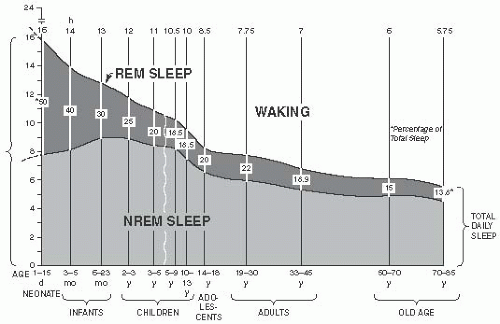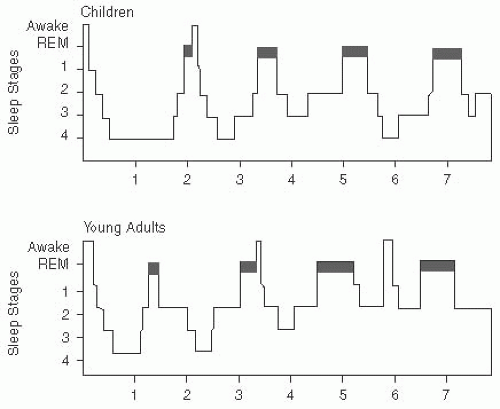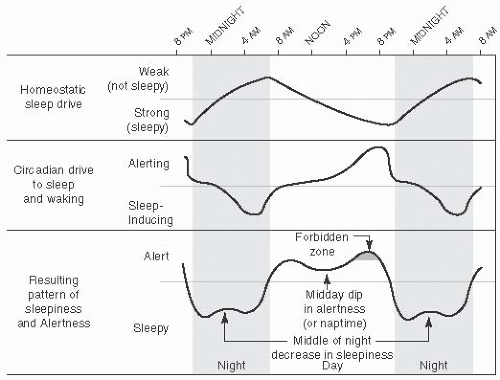HISTORY:(1) Bedtime routine: Sleep associations and behaviors, sleep environment and sleep schedules, including that on weekdays and weekends, late evening activities such as watching TV, internet access, texting, emailing.
(2) Nighttime Sx: Snoring, arousals, restlessness, leg movements, pauses in breathing, sweating, dry mouth, mouth breathing;
(3) Daytime Sx: Sleepiness, fatigue, naps.
(4) Medical and psychiatric history: Asthma,
GERD, allergies, chronic lung disease, sickle cell disease, pain, neurologic problems such as epilepsy,
HA,
CP,
DD,
ADHD,
ASD, depression, anxiety, and bipolar disorder.
(5) FHx: Sleep apnea, narcolepsy, restless leg syndrome (
RLS), long sleep requirements.
(6) Meds: Caffeine, alcohol, sedatives, and stimulants.
PHYSICAL EXAMINATION: (1) Growth parameters: Height, weight,
BMI, neck circumference.
(2) ENT exam: Deviated nasal septum, turbinate hypertrophy, adenotonsillar hypertrophy, oropharyngeal crowding, large tongue.
(3) Craniofacial features: Adenoid facies, high arched palate, midfacial hypoplasia, retrognathia, crossbite.
(4) Neurologic exam: Especially in children with restless leg
Sx,
EDS, atypical parasomnias, and seizures.












